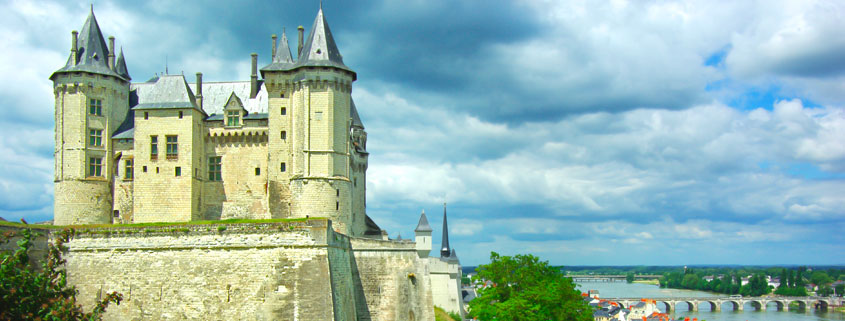Loire Valley castles
From Romorantin, there are many castles to visit: Blois, Chambord, Cheverny, Troussay, Chémery, Fougères sur Bièvre, Valençay, Villesavin, Château du Moulin, Lassay sur Coisne, Gue-Pean, Beauregard, Blancafort, Clos Lucé castle, Chaumont-sur-Loire, la Ferte Imbault, Amboise, Loire Valley mini castles, the medieval city of Mennetou sur Cher…
Stay at the Ethic Etapes Jean Monnet Centre in Romorantin and enjoy the riches of the Sologne and the Loire Valley area.
For more about castle visits, click on the site of the Office de Tourisme de Romorantin.
Matra museum
Matra Automobile Museum is home to an enviable collection of Matra racing cars and prototypes, as well as an engine room over an area covering some 3,000 square metres.
Make the most of your stay at the Ethic Etapes Jean Monnet Centre to visit a museum steeped in industrial industry.
Free or guided visit.
For more information, visit the site of the museum.
Sologne museum
Located in the centre of Romorantin-Lanthenay, capital of the Sologne region, Sologne Museum welcomes you to an exceptional heritage. Its three buildings (the Chapter mill, the City mill and the Jacquemart Tower) straddle the River Sauldre, which played a key in the history of the city.
f the city. These watermills reflect the artisanal and industrial activities, which governed Romorantin life for centuries. The Sologne Museum invites you to discover its history through the exhibitions on display: Sologne traditions, Clothing, Beliefs, Homes, Hunting, Professions of yore and Natural Heritage.
For more information, visit the site of the museum.
Parks and gardens
Another way to discover Romorantin: The Loire Valley’s parks and gardens.
De la Motte Island and Poulies Island
The centuries-old island of La Motte has undergone many changes since the second half of the nineteenth century. It is now a leisure park, with mini-golf, bouncy castles and a snack bar in summer. Connected by a bridge, Poulies Island has retained its natural charm.
Ferdinand Buisson Gardens – Romorantin – Sologne – Loire Valley
Created in 1860, these British-style public gardens are filled with different plants and are enjoyed by many a visitor. The presence of remarkable trees such as Ginkgo Biloba is indicative of the importance of botany in the nineteenth century. The great botanist, Emile Martin (1810-1895), was almost certainly involved in the creation of the original park. His collection of 600 books on botany, kept in the Sologne Museum, is one of the largest in France. Discover the Botanical Route at the same time.
The Town Hall Gardens and the Pagoda
In a reference to China, the originality of Romorantin’s town hall gardens and pagoda is sure to surprise you. Bought at the World Expo in the late nineteenth century, this monument was originally used as a water tower and is decorated with a series of painted panels along the theme of water birds. This architectural masterpiece is listed as a historical monument. Built around 1880, the town hall first belonged to the Normant family, a dynasty of textile industrialists.
Beauvais Park and Castle
Lovers of wide open spaces won’t want to miss the 13 acres of parkland to discover on foot or by bike.
Hackberries in Romorantin
In 1896, Jean-Baptiste Hureau planted a hackberry tree given to him by one of his customers, in the courtyard of his office on Rue Faubourg d’Orléans. Since then, this tree, which grows primarily in southern France (known as Provence Hackberry), can be found all over the Romorantin streets and gardens.
Present in the region 300,000 years ago, the hackberry disappeared during the last ice age before being reintroduced in the south through the first cultural exchanges in the Mediterranean 4,000 years ago.
1,000 years later, before the discovery of sugar, Homer extolled the sweetness of its fruit, calling it “lotus”. According to Pliny, Rome venerated the tree, associating it to the Goddess Diana. So it is no surprise then to see a tree that is associated with the Goddess of hunting in Sologne!

